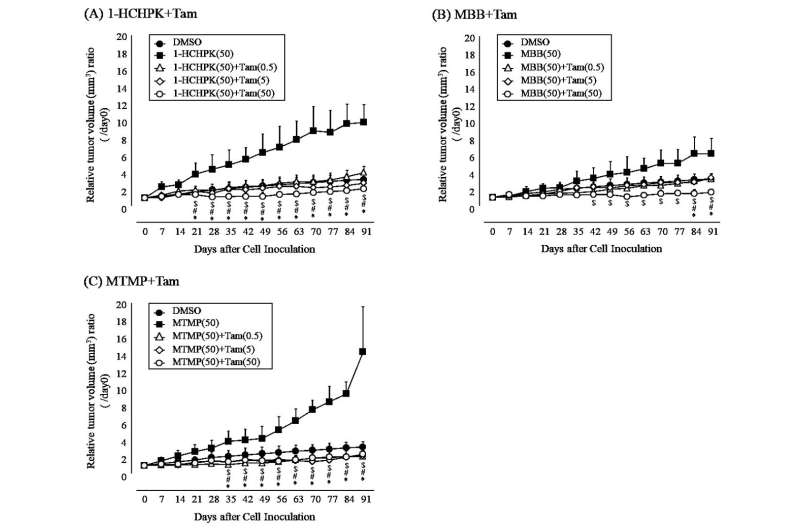Hormonal hazard: Chemicals used in paints and plastics can promote breast tumor growth

Photoinitiators are chemicals that release reactive molecules in response to UV radiation. Given these properties, photoinitiators are used in a wide range of products, including plastics, paints, inks, and adhesives. As a result, photoinitiators are present in several objects of everyday use as well as in medical products and instruments such as dental fillers and containers.
Recently, studies have demonstrated several health hazards associated with photoinitiators, raising alarms about their safety. In particular, the presence of these compounds in clinical instruments, routinely used for treating high-risk individuals such as cancer patients, has become a major cause for concern. Previous studies have shown that three photoinitiators commonly found in plastics and paints—1-HCHPK, MBB, and MTMP—show estrogen-like effects on cultured breast cancer cells, increasing their proliferation. Owing to the presence of these compounds in marketed injection solutions and the well-known link between estrogen activity and breast cancer, a thorough investigation of their effect on breast tumor growth is warranted.
Dr. Yoichi Kawasaki and Prof. Toshiaki Sendo from Okayama University in Japan sought to gain a better understanding of these effects. In their recent study published in Current Research in Toxicology, they examined how exposure to 1-HCHPK, MBB, and MTMP affected the growth of transplanted breast cancer tumors in mice. They found that all these compounds caused a faster increase in the growth of breast tumors, within 13 weeks of treatment. "This study extends our previous findings and shows that in addition to promoting the proliferation of breast cancer cells in culture, these photoinitiators also increase the growth of breast tumors in live animals. This implies that they could also potentially hasten disease progression in breast cancer patients," explains Dr. Kawasaki, who led the study.
To understand the mechanism underlying these breast tumor-promoting effects, they pre-treated the mice with tamoxifen—a compound that prevents estrogen or estrogen-like molecules from affecting cellular processes. They found that tamoxifen pretreatment substantially decreased the toxic effects of the photoinitiators, indicating that this toxicity was mediated by estrogen receptors. "Estrogen promotes the growth of breast cancer tumors. Because tamoxifen blocks estrogen receptors, it is often used in breast cancer treatment. Our results show that the photoinitiators likely promote breast tumor growth by binding to estrogen receptors on tumor cells and initiating estrogen signaling," clarifies Prof. Sendo.
Together, the results from the study by Dr. Kawasaki and Prof. Sendo show that 1-HCHPK, MBB, and MTMP have estrogen-like activity and could thus act as hormonal disruptions. Given the important role of estrogen in regulating reproductive function in both men and women, such disruptions could affect not only patients with breast cancer, but also healthy individuals. While the researchers intend to explore the effects of photoinitiators on reproduction in future research, the present study provides information crucial from a breast cancer management perspective and also represents an urgent call-to-action for the elimination of toxic materials from medical equipment.
Indeed, for both Dr. Kawasaki and Prof. Sendo, the ultimate goal is ensuring that no product of daily use poses health risks to humans. "Photoinitiators have helped us improve the quality of several commonly used products. But it is time we reconsider whether their benefits outweigh their risks, and our findings are an important milestone in encouraging this conversation. We hope that it will prompt more intensive research and stricter regulations on what materials can be adopted for commonly used products, especially those with medical applications," says Dr. Kawasaki.
More information: Yoichi Kawasaki et al, Three photoinitiators induce breast tumor growth in mouse xenografts with MCF-7 breast cancer cells, Current Research in Toxicology (2021). DOI: 10.1016/j.crtox.2021.08.004


















